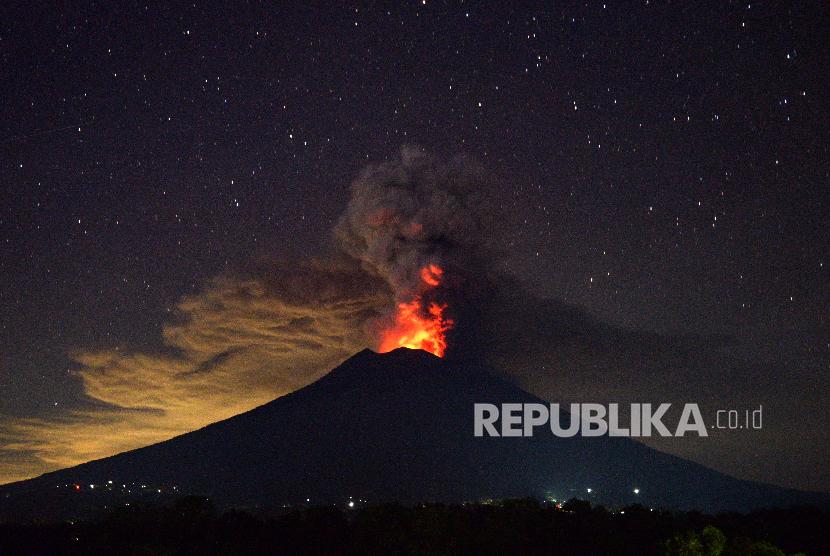REPUBLIKA.CO.ID, KARANGASEM -- The Energy and Mineral Resources Ministry's Volcanology and Geological Hazard Mitigation Center (PVMBG) has reported here on Saturday that Mount Agung's magma has inched closer to the crater.
The magma will immediately reach the surface due to the high volcanic activity amid the eruption stage, the PVMBG stressed.
"Most tremors comprised deep and shallow volcanic quakes," Head of PVMBG Kasbani noted at the Mount Agung Observatory Post in Rendang Village, Karangasem District, Saturday.
Kasbani explained that the magma chamber was formed since the highest seismic activity was recorded from September to October.
Although the number of quakes is currently decreasing, Mount Agung continues to experience high volcanic activity.
Since November until today, Kasbani remarked that the intensity of the tremors was recorded to have crossed the seismograph's maximum limit.
The high intensity of the tremors indicates that the molten particles would soon reach the crater.
Apart from the high-intensity tremors, some minor quakes were also recorded by the PVMBG. The low-intensity tremors will provide information on the movement of the molten fluid.
Kasbani said the PVMBG has consistently recorded the hotspots that appeared in the volcano on Nov 27-29. The temperature of the hotspots was recorded in the range of 286.6 to 298.8 degree Celsius, with a maximum power of 97 megawatts.
The satellite has also displayed information on the elusive eruption process wherein the lava is flowing from the chamber to the crater. The process will increase the lava flow by 20 million cubic meters, or one-third of the total volume of the crater.
During the night, the PVMBG had also reported that glowing red lava was seen in the crater. The red glow appeared due to the high temperature of the lava in the crater, Kasbani remarked.
"The red glow of the lava was reflected on to the smoke column, and as a result, we could see the burnt orange glow towering above the volcano," he noted.
Kasbani further emphasized that according to the multi-parameter analysis, the volcanic activity of Mount Agung remains at its highest.
The authority has also extended the danger zone to 10 kilometers in the north, northeast, southeast, south, and southwest directions of the crater.


